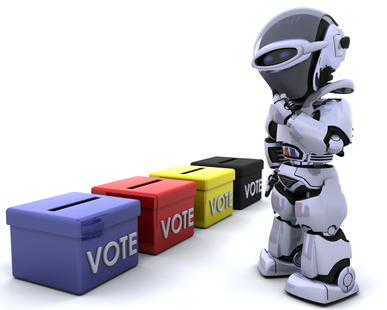
On April 19, 1775, skirmishes between King George’s redcoats and rebel colonist militiamen in Massachusetts sparked the American Revolution. It took four days for word to reach New York, and nine days before the Virginia General Assembly heard the news. Today, such a monumental event would be tweeted, filmed, and broadcast live across the world as it unfolded.
These two very different revolutions are separated by 250 years, but there’s not much between them in terms of global significance. Political contests that were once fought exclusively on a few miles of bloody battlefield are now played out on screens no more than a few inches big, between antagonists in different time zones.
The digital revolution has profoundly impacted the nature of both foreign and domestic policies. The State Department now communicates directly with more than 15 million people via social media. During election cycles, cloud campaign tools, canvassing software and GOTV autodialing software is helping political campaign consultants execute their strategies with greater precision and efficiency than ever.
As crucial as technology is for garnering votes at home, it may have saved lives abroad. In a report published in 2012, Fergus Hanson traces the rise of eDiplomacy to the 1998 US embassy bombings in Nairobi and Dar es Salaam, in which hundreds of people were killed. A Blue Ribbon Panel in charge of investigating the attacks concluded the State Department had substandard internal communications processes. This began to change - an initially-slow evolution accelerated by the 9/11 attacks, which prompted the establishment of the first Taskforce on eDiplomacy, set up by Colin Powell in 2002.
Now called the Office of eDiplomacy, this legacy of the War on Terror has undoubtedly made foreign diplomacy efforts easier and safer. There is no longer a need for US citizens to visit their embassies – they can now stay in touch via Twitter.
Technology is affording politicians the chance to wield their influence more directly, more quickly, and more frequently, to ever-greater numbers of people. For good or bad, this is turning the state into what Hanson describes as a ‘de facto media empire.’ It’s also giving governments an early warning system regarding grass roots political movements. How they choose to wield this power will vary from country to country, statesman to statesman.
On the flipside, global citizens have multiple channels through which to share information between each other, and get their voices heard on the political stage in a way that wasn’t possible even ten years ago. Viral videos can spread messages capable of forcing themselves onto a foreign policy agenda. There’s even talk of direct democracy conducted through mobile devices, whereby voters can engage with the political process on an issue-by-issue basis.
The intersection of technology and politics has been firmly established. With mid-term elections a few months away, political campaign consultants are using GOTV tools and canvassing software to leverage as much support as possible. The success of these strategies will only be fully understood once the elections are over. One thing’s for sure, at home and abroad, technology has changed the face of politics forever.